prosthetics
Latest
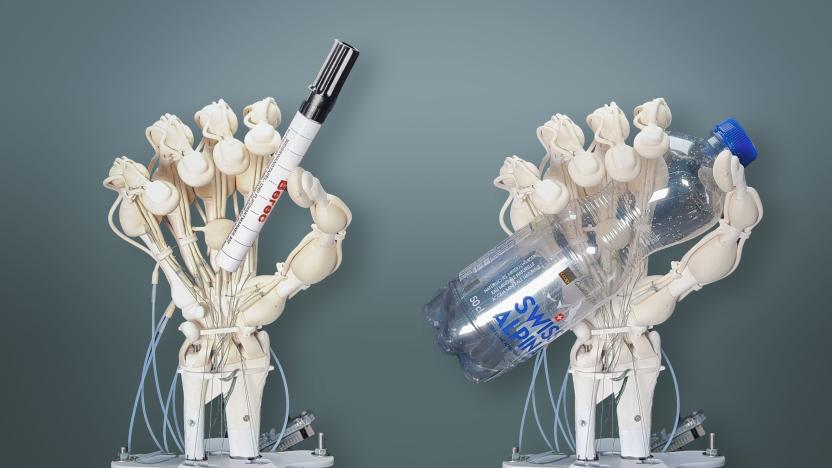
Researchers printed a robotic hand with bones, ligaments and tendons for the first time
Researchers at ETH in Zurich, a public university, along with a US-based startup affiliated with MIT have printed a robotic hand complete with bones, ligaments and tendons for the very first time. This represents a major leap forward in 3D printing technology.

Brain-machine interface helped a man with paralysis feed himself using robotic arms
Scientists have developed robotic arms that let people with paralysis feed themselves.

Netflix’s ‘Sexy Beasts’ puts hot people in furry prosthetics for blind dates
Sexy Beasts puts singles together on blind dates — but the twist is they're all wearing serious prosthetics and makeup
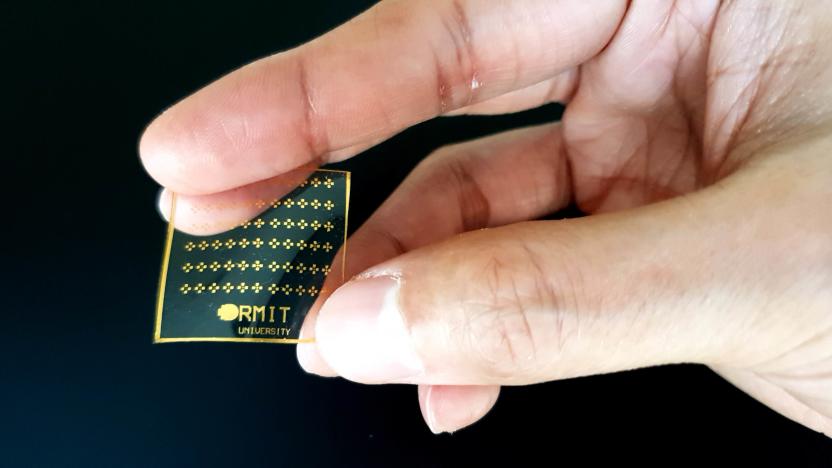
Electronic skin reacts to pain like a human
Scientists have developed electronic skin that reacts to pain like humans, potentially leading to smarter prosthetics and robots.
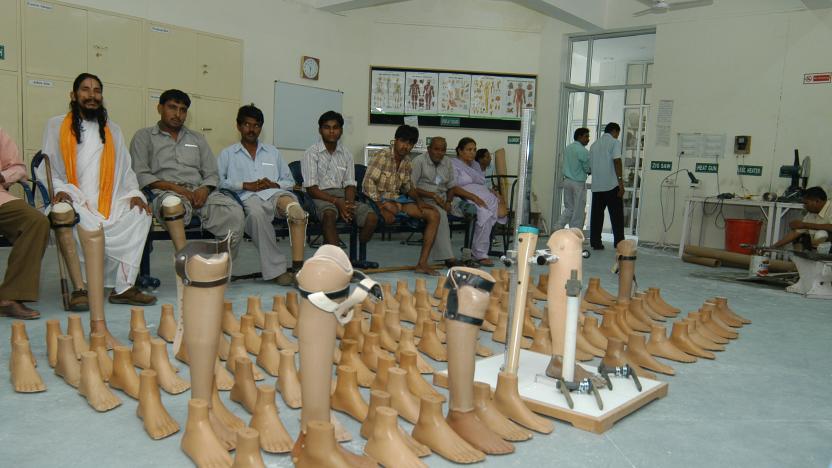
Hitting the Books: This $80 prosthetic has helped millions walk again
In her new book, What Can a Body Do, Hendren examines the challenges that people with disabilities face on a daily basis in a world that often doesn’t take their needs into account and shows that more inclusive design — from cybernetic prosthetic arms and more accessible city streets to tactile doorbells for the deaf — isn’t just possible, it’s already practical. In the excerpt below, Hendren looks at the Jaipur Foot, an unpowered, low-cost prosthetic that has helped nearly two million lower leg amputees in India and other countries regain their ability to walk. From WHAT CAN A BODY DO: How We Meet the Built World by Sara Hendren published on August 18, 2020 by Riverhead, an imprint of Penguin Publishing Group, a division of Penguin Random House LLC. Copyright © 2020 Sara Hendren.
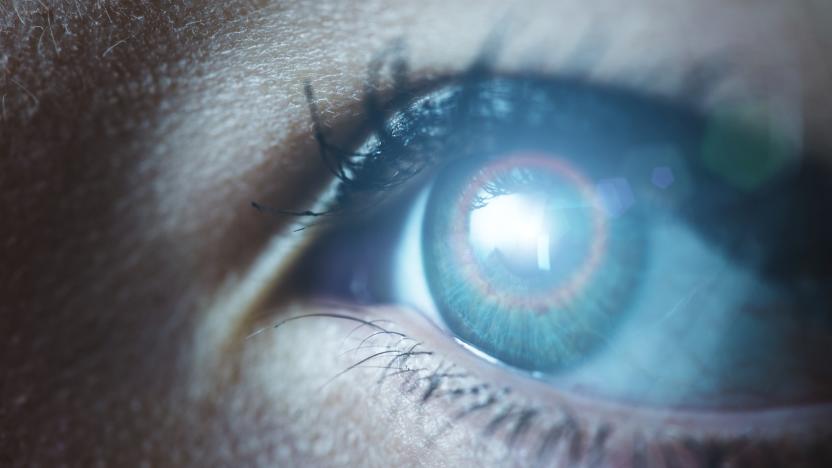
Scientists create a cyborg eye that mimics the real thing
Scientists have created a biomimetic artificial eye that could one day be powered by sunlight.

Intel's ultra-efficient AI chips can power prosthetics and self-driving cars
Even though the whole 5G smartphone thing didn't work out, Intel is still working on hard on its Loihi "neuromorphic" deep-learning chips, modeled after the human brain. Now, it has unveiled a new system, code-named Pohoiki Beach, made up of 64 Loihi chips and 8 million so-called neurons. It's capable of crunching AI algorithms up to 1,000 faster and 10,000 times more efficiently than regular CPUs for use with autonomous driving, electronic robot skin, prosthetic limbs and more.

Synthetic fiber 'muscles' could lead to brawny robots and prosthetics
Most attempts at giving robots muscles tend to be heavy, slow or both. Scientists might finally have a solution that's both light and nimble, though. They've developed fibers that can serve as artificial muscles for robots while remaining light, responsive and powerful. They bonded two polymers with very different thermal expansion rates (a cyclic copolymer elastomer and a thermoplastic polyethylene) that reacts with a strong pulling force when subjected to even slight changes in heat. They're so strong that just one fiber can lift up to 650 times its weight, and response times can be measured in milliseconds.

AI-tuned robotic knee helps amputees walk within minutes
Amputees who receive robotic limbs can't usually start using them right away. It typically requires hours of manual tweaks to adapt to their particular movement styles, and they may need to come back for more if anything changes. Soon, however, they might only need the briefest tweaks to get moving. Researchers have crafted an AI system that can tune a robotic knee (not pictured) to allow walking on level ground within 10 minutes. It uses a trial-and-error algorithm to recognize patterns in sensor data, set initial safety limits, and learn patterns that match stable, smooth walking motions.
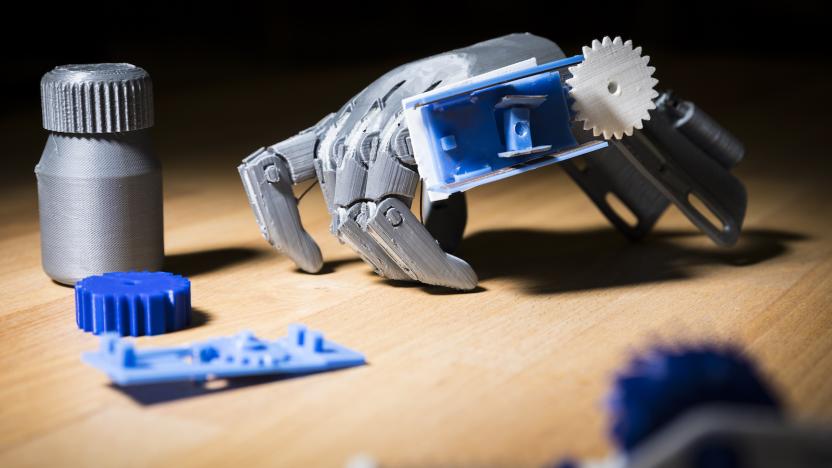
Researchers develop 3D printed objects that can track their own use
Researchers at the University of Washington have been developing a way for 3D-printed plastic objects to transmit data without the need for embedded batteries or electronics. Last year, they showed how their devices can take measurements of wind speed and liquid flow, and then transmit that information through an antenna that reflects ambient WiFi signals. Now, they're taking their work a step further, bringing the technique to assistive technology.

AT&T's LTE-M device can help doctors perfect prosthetic limbs
AT&T has teamed up with prostheses provider Hanger Clinic to develop a standalone, network-connected device that can help prosthetists (thanks, Jaclyn!) tweak prosthetic limbs for each patient's needs. The small device, designed to stick to a prosthesis, is equipped with an accelerometer, gyroscope and magnetometer. Those components can detect and collect the data medical providers need to be able to figure out if a patient has issues with their limb's fit and comfort or if they're having any movement issues. And, since the device uses AT&T's LTE-M network, it can upload that information to the cloud in near-real time even with no WiFi or Bluetooth connection.

Rugged e-skin can heal its cuts and scrapes
Scientists dream of prosthetics and robots with electronic skin that can convey heat and pressure just like the real thing, but there's a big problem getting in the way: the outside world. Bumps and scrapes can damage these sensors, and it's not really practical to toss these skins in the trash when they're no longer useful. UC Boulder researchers hope to fix that. They've developed an e-skin that can communicate temperature and pressure, but is both self-healing and fully recyclable. You could take a cut on a synthetic arm without panicking, and reuse any damaged 'tissue' to make replacements.
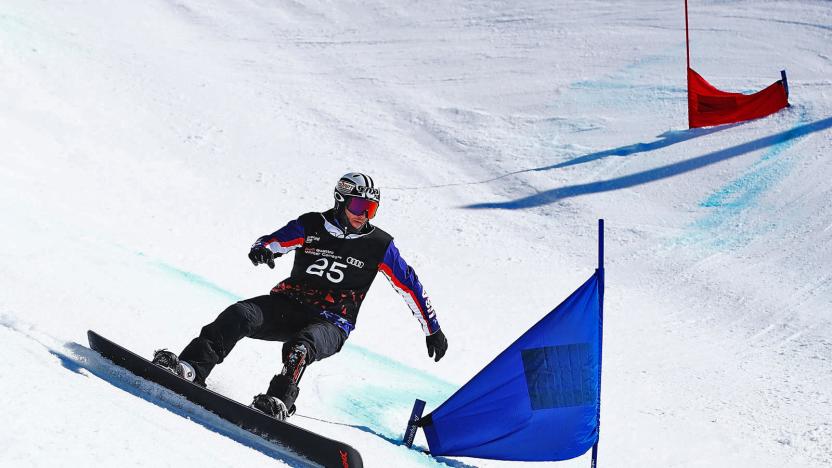
A US Paralympian designed Team USA's snowboard prosthetics
Mike Schultz was a professional snowmobile racer, and a damn good one at that. But in 2008, his life's course took a turn after a competition accident shattered his left knee and left him clinging to life. When his injuries began causing his kidneys to shut down, doctors decided to amputate the leg just above the knee.

Jellyfish-inspired e-skin glows when it's in 'pain'
Artificial skin stands to have a variety uses, with potential applications in everything from robots to prosthetics. And in recent years, researchers have been able to instill sensory perception, like touch and pressure, into artificial skin. However, while those sorts of senses will be incredibly important in engineered skin, they've so far been rather limited. For example, while current versions can be quite sensitive to light touch, they don't fare so well with high pressures that could cause damage. So researchers at the Huazhong University of Science and Technology in China set out to fix that problem and they drew their inspiration from jellyfish.
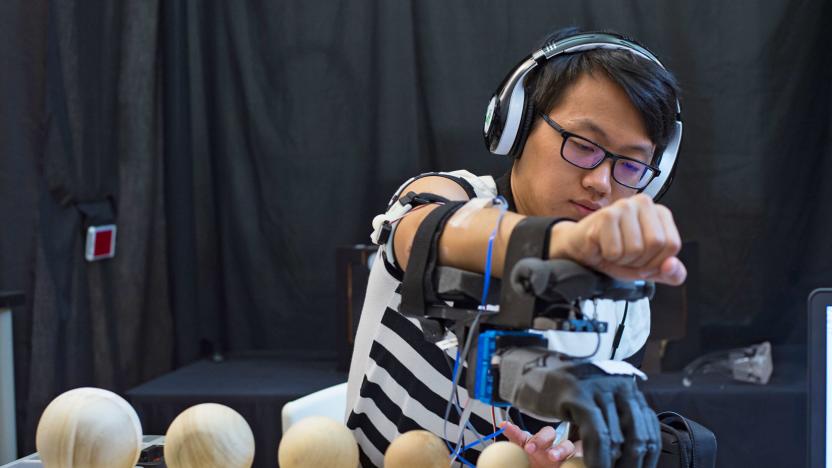
Haptic feedback gives prosthetics 'muscle sense'
For all the actuators, artificial tendons and glitter cannons that researchers are packing into modern prosthetics, these devices still lack an noninvasive means of transmitting haptic feedback to its user. However a device developed by Rice University in partnership with the University of Pisa and the Italian Institute of Technology aims to do just that.

ICYMI: A prosthetic hand with two senses
Today on In Case You Missed It: We get our first close-up look at Saturn's rings thanks to the Cassini spacecraft -- which just completed the first of its twenty-two passes through the planets' famed hoops. NASA stitched together the images from the craft to give us Earthlings an incredible first-person (first-spacecraft?) point-of-view of the recent dive, which began at the north pole of the planet and moved down its side. The imaging team working on Cassini's trips expects to get even better data from the subsequent trips, which will gather information on Saturn's gravity and magnetic fields.
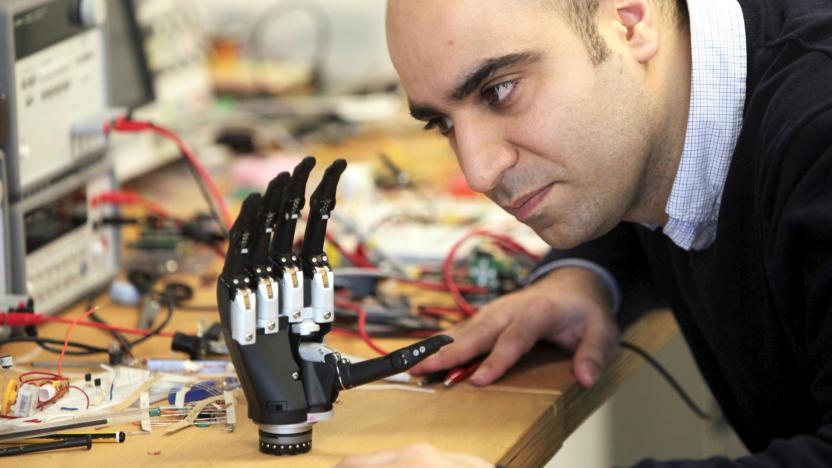
'Intuitive' prosthetic hand sees what it's touching
Even as we begin to wire prosthetics directly into our peripheral nervous systems and wield Deus Ex appendages with only the power of our minds, many conventional prosthetic arms are still pretty clunky, their grips activated through myoelectric signals -- electrical activity read from the surface of the stump. The "Intuitive" hand, developed by Dr Kianoush Nazarpour, a senior lecturer in biomedical engineering at Newcastle University, offers a third approach. It uses a camera and computer vision to recognize objects within reach and adjust its grasp accordingly.

The first Cybathlon pushed the limits of bionic technology
Andre van Rüschen slowly climbed a five-step ramp at the end of his race. With a black processor strapped to his back and leg supports on either side of his lower limbs, he stayed focused on the body-machine coordination that was keeping him upright. He had walked over a wooden slope, criss-crossed bright yellow bars and tried to step on gray discs that were placed irregularly on the floor. Now, standing atop the last obstacle in the exoskeleton race, he took a moment to pause and look up at his opponent on the adjacent track. They were both on the ramp, going head-to-head at the world's first Cybathlon, a sporting competition designed for people with severe disabilities. The crowd inside the Swiss Arena in Zürich cheered them on. Van Rüschen, the German pilot who was using a ReWalk exoskeleton, quickly regained his focus and prepared to walk down the next five steps to complete the race. He hit a button on the remote around his wrist to change the settings from "walk" to "climb" and quickly adjusted his upper body to balance his weight on the crutches in his hands. With his competitor, Mark Daniel, right on his heels, he leaned forward to pick up the pace.

Powered prosthetics turn mundane tasks into monumental feats
Lukas Kalemba was walking home with some friends after a night of partying and drinking in Dortmund, Germany, in 2003. While crossing a bridge along the way, he stopped to rest but lost his balance and fell over. In an attempt to break his fall, he instinctively reached out and grabbed a wire that stretched across. It kept him from falling 20 feet to the ground immediately but the wire sent a high-voltage current through the left side of his body, causing irreparable damage to his leg. Kalemba became an above-the-knee amputee when he was 19 years old. He was in an induced coma for three weeks until the doctors brought the pain down to a manageable level. "The first time I noticed it was in the hospital when I stood up at night to go to the toilet," he says. "I wanted to stand on my left foot [but] I crashed on the floor."

ICYMI: Area man gets robo-legs and scientists invent brain dust
try{document.getElementById("aol-cms-player-1").style.display="none";}catch(e){}Today on In Case You Missed It: Ohio resident Lee Raisor lost all four of his limbs in an industrial accident 30 years ago but today is the proud new owner of a pair of robot legs. Just look at him go! We also take a look at UC Berkeley's newest invention: tiny, implantable computers capable of monitoring and controlling future prosthetics from inside your skull. They're calling it "neural dust". And finally, it's Saturday so here are all the headlines you missed from earlier this week presented in rapid-fire fashion. We recommend reading up on Facebook trying to remove clickbait from the site. As always, please share any interesting tech or science videos you find by using the #ICYMI hashtag on Twitter for @mskerryd.








